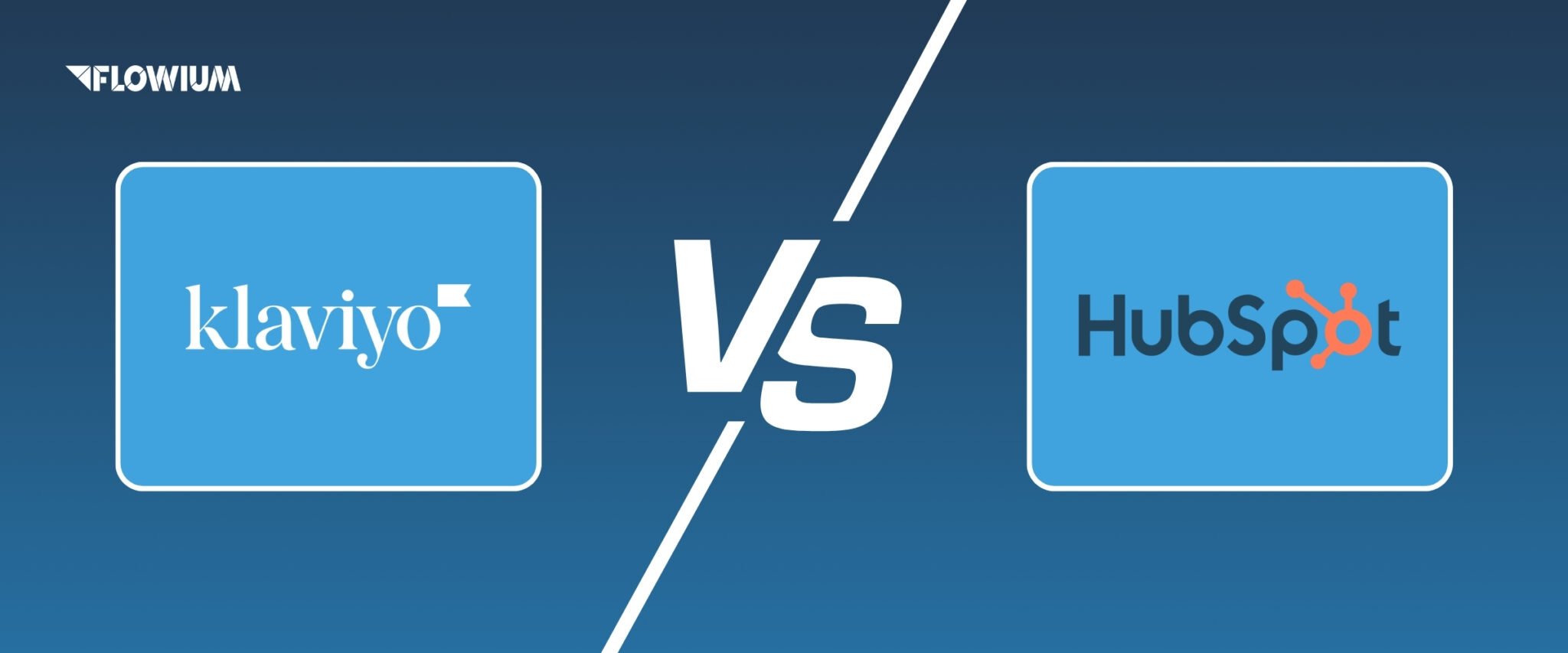Choosing the best email marketing software for your eCommerce needs should not be rushed. This choice directly affects the success of your marketing, as well as its flexibility and performance. The right software will provide you with a great experience in automation and development, while the wrong one won’t be able to unleash your full potential.
Klaviyo and HubSpot are the two leading email marketing platforms that offer a lot of innovative features for eCommerce brands. However, even though each of them has a lot to offer, they still have different purposes, which means you will have to choose the best one for your goals. That’s what we’ll help you with. In this article, we will explore all the details of HubSpot vs. Klaviyo so that you can choose the best one for you.
Klaviyo vs HubSpot: Overview
Before moving on to the comparison, we should indicate the market share of Klaviyo and HubSpot in 2025. According to 6sense:
- Klaviyo has a 9.92% market share in the sphere of online marketing tools with a customer base of 173,923 customers.
- HubSpot has a 9.29% market share in the sphere of online marketing tools with a customer base of 162,787 customers.
Analyzing the overall comparison of Klaviyo vs. HubSpot, it is important to first highlight the main important parameters such as prices, design, and features of the CRM.
1. Pricing
Klaviyo has a simpler and more affordable pricing model. Most of the platform’s features are available even in the free plan, making it easy to get started and test features without upfront costs. HubSpot, on the other hand, requires a paid subscription to unlock the core features.
2. Design
In terms of design, Klaviyo stands out for its highly customizable, professional email and form templates. HubSpot also allows you to customize templates, but achieving the same visual quality usually requires more time and design skills.
3. CRM
However, HubSpot definitely leads the way in customer relationship management. It’s built as a full-featured CRM platform and offers tools that Klaviyo lacks, such as a detailed view of the sales pipeline and reliable contact management features. So, while Klaviyo may be a better choice due to its flexible pricing, quick setup, and design flexibility, HubSpot is more suitable for companies that need advanced CRM and sales tracking capabilities.
Klaviyo vs HubSpot: Pros and Cons Analysis
As we go deeper into the details, let’s look at the pros and cons of each software. These are important components of the comparison that will make an essential contribution to the Klaviуo vs. HubSpot debate.
Klaviyo
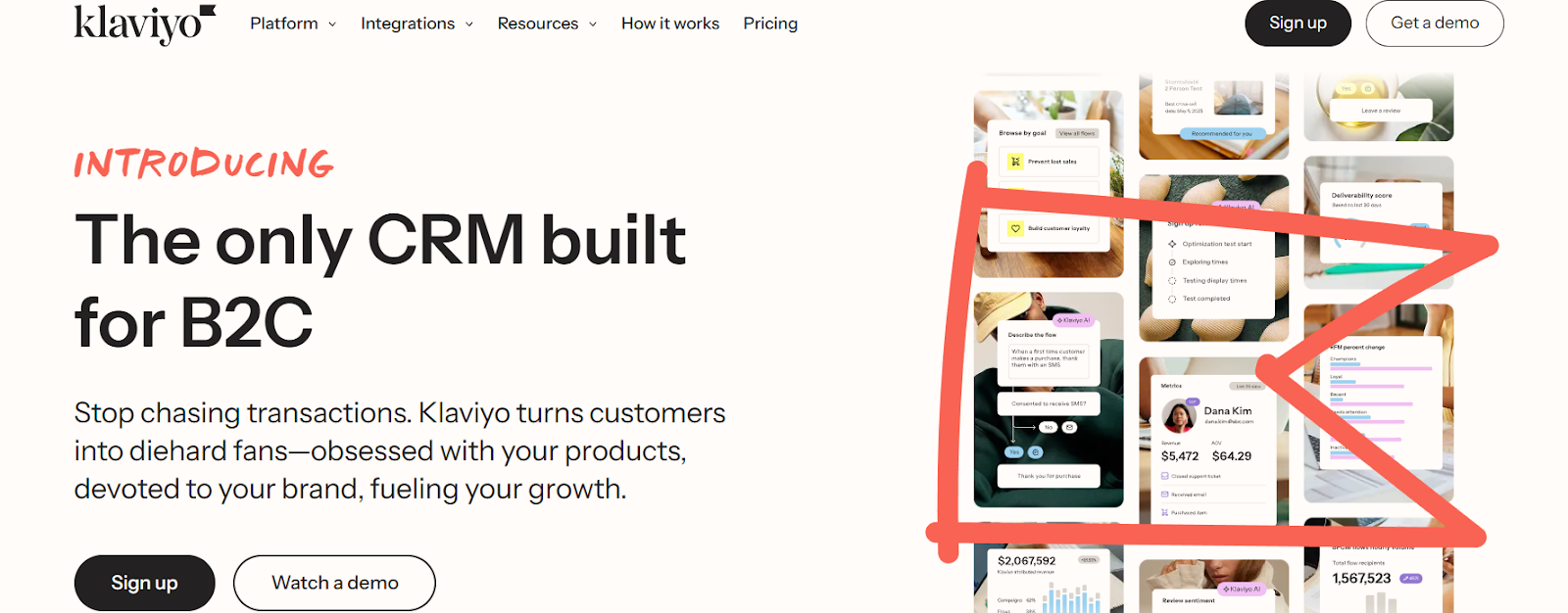
Klaviyo Pros:
✅ Availability of all features in the free plan.
✅ Flexible and excellent design of forms and email templates.
✅ Detailed and thorough reporting.
✅ Utilizes AI to forecast customer behavior.
✅ Offers robust segmentation and dynamic content features.
✅ Supports both email and SMS campaigns.
Klaviyo Cons:
➖ No deal pipeline view.
➖ Free plan users receive support only for the first 60 days.
➖ Pricing increases significantly with larger subscriber lists.
HubSpot
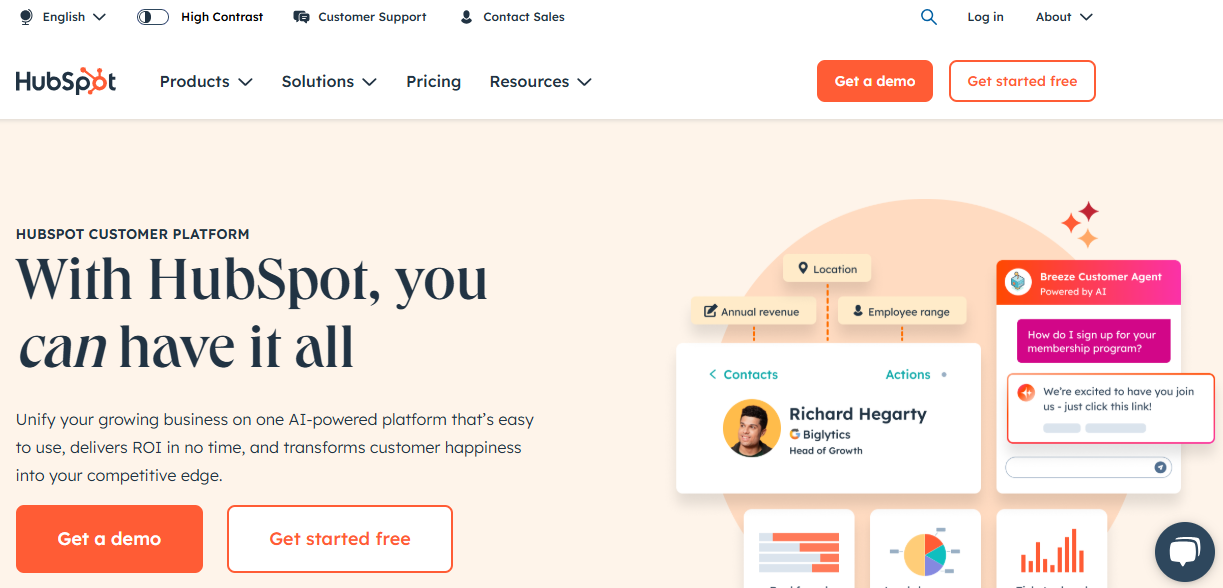
HubSpot Pros:
✅ Features some of the most extensive CRM capabilities.
✅ Rich integration options with more than 1,600 apps.
✅ Includes email marketing, social media management, and more.
✅ Incorporates AI tools like Breeze AI for task automation, customer engagement scoring, and data-driven insights.
HubSpot Cons:
➖ Confusing and expensive pricing plans.
➖ Plain-looking forms and email templates.
➖ No support for users of free features.
➖ Advanced features require paid plans.
➖ Detailed analytics are available only in higher-tier plans.
Klaviyo vs HubSpot: User Experience and Editor Capabilities
Both Klaviyo and HubSpot are built in order to be user-friendly and easy to use. The editor interfaces are almost identical, with all editing functions present in the panel on the left. The design of the panel and functions is quite intuitive and does not complicate the work. An example of a user-friendly interface is simple buttons highlighted with colors to attract attention, as in HubSpot:
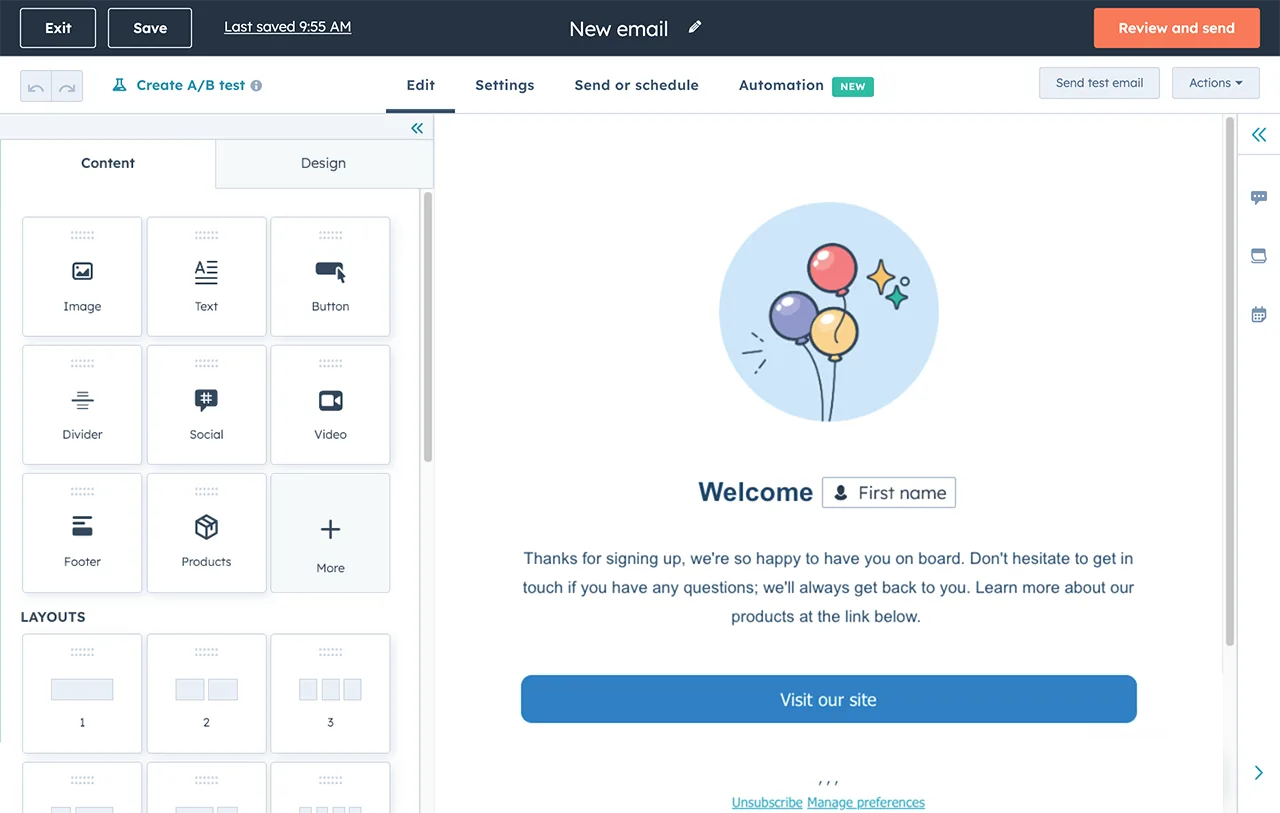
The editor of both platforms provides such features:
- Drag and drop different content blocks into the email.
- Editing text by changing fonts, colors, padding, etc.
- Previewing the look of your email on desktop and mobile phones.
- Preview the look of your email for specific contacts.
Check out these features in Klaviyo’s email editor:

Winner: Overall, both Klaviyo and HubSpot editors provide all the standard features you need. The only downside is the impact of the pricing policy, where certain important features of HubSpot’s email editor are only available if you subscribe to the Marketing Hub Professional plan or above. As we have already mentioned, Klaviyo’s pricing policy is better and provides full access to the features in the free plan.
Score: Klaviyo 1 – HubSpot 1
Pipeline Management Opportunities
One of the features of HubSpot is the deal pipeline, which offers a visual way to manage the sales process. You can move deals between stages by simply dragging and dropping them into the appropriate column.
Klaviyo doesn’t offer a similar tool. This might not be a problem if your business doesn’t rely on a sales-oriented approach. However, for those who rely heavily on sales, HubSpot’s built-in CRM features will be of great benefit.
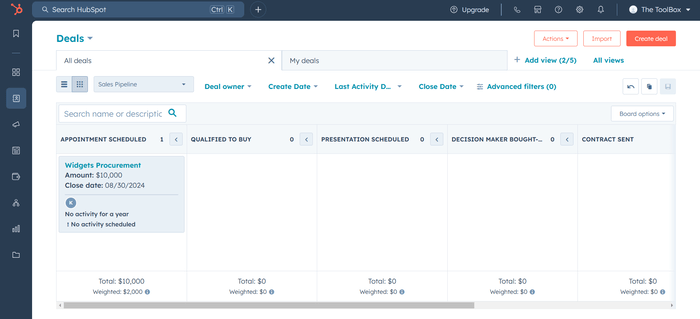
Winner: Hubspot is the obvious leader, as it provides a feature that Klaviуo lacks.
Score: Klaviyo 1 – HubSpot 2
Klaviyo vs Hubspot: Customization
An important function of email marketing platforms is to collect and store data about subscriber behavior and personal information. Klaviyo and HubSpot support this function and collect all the information you need to customize your email marketing.
In Klaviyo, this feature is implemented by creating individual contact profiles from an email list that includes:
- Email address of the contact
- The way the subscriber learned about your brand
- Lists and segments they belong to
- Records of all previous email interactions
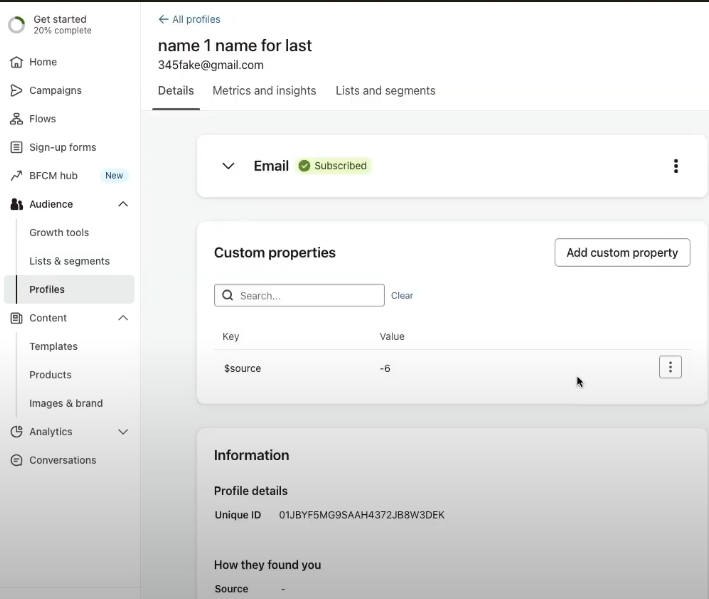
HubSpot also collects a number of customer information:
- Detailed contact records
- User’s email activity
- User behavior on websites
- User’s communication history
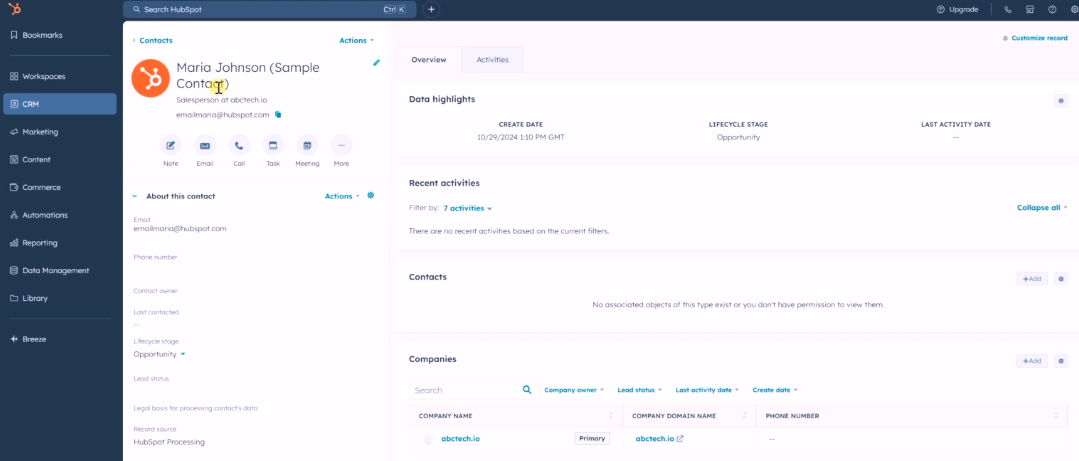
The user profiles collected by HubSpot give you the ability to reach out to a contact directly, through an email, call, or appointment, everything in one place.
Winner: HubSpot is more advanced in terms of customization, and also is the absolute leader in this analysis because it provides important functions that Klaviyo lacks.
Score: Klaviyo 1 – HubSpot 3
Design Features and Flexibility Comparison
We will evaluate the design capabilities of Klaviуo and HubSpot platforms by the templates they provide, which are designed to help you build attractive, good-looking emails without any design skills.
The size of Klaviyo’s email template library is impressive. The templates in this library are not only visually appealing but also quite modern. You can search for a suitable template by email type, layout, and seasonal themes. For each of these search criteria, you can find a lot of solutions that will become the perfect template for your email.
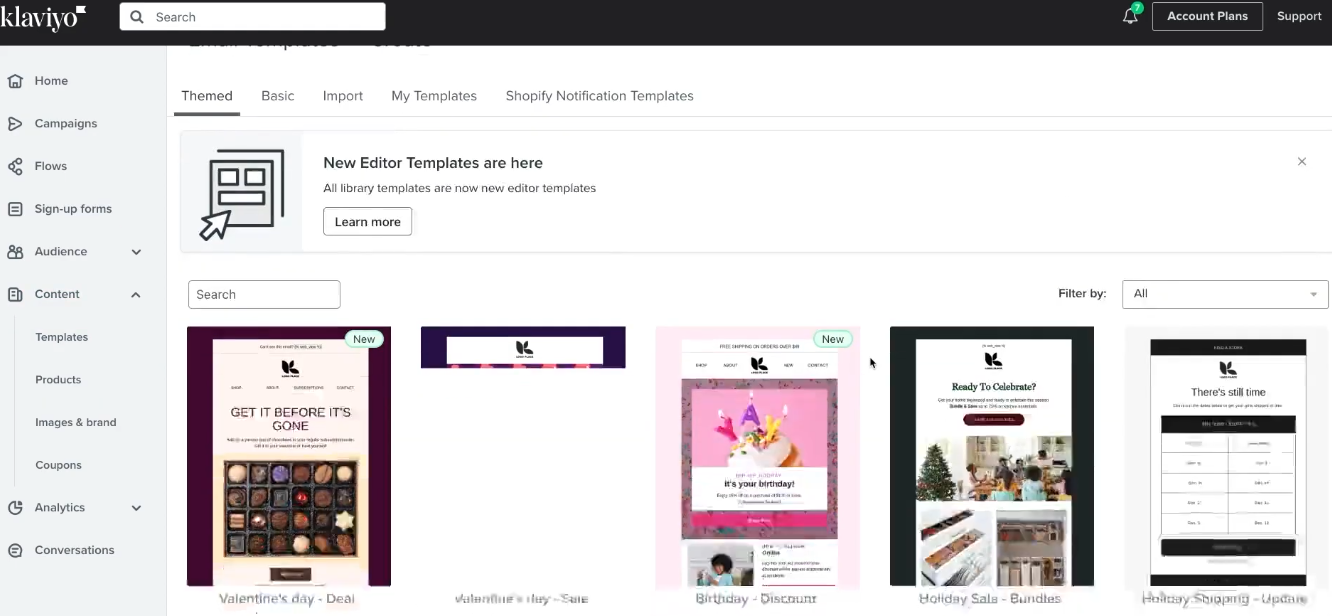
These email templates are also fully editable and customizable with the email editor. These features are flexible enough for you to add new sections and columns or change to a different template to create a unique and outstanding design.
HubSpot’s template design is somewhat inferior, with a more simplistic look. Although there are some attractive templates, they are only available with a paid subscription. The flexibility is also rather limited. As in Klaviyo, you can modify templates by adding sections or columns, but not by editing specific details.
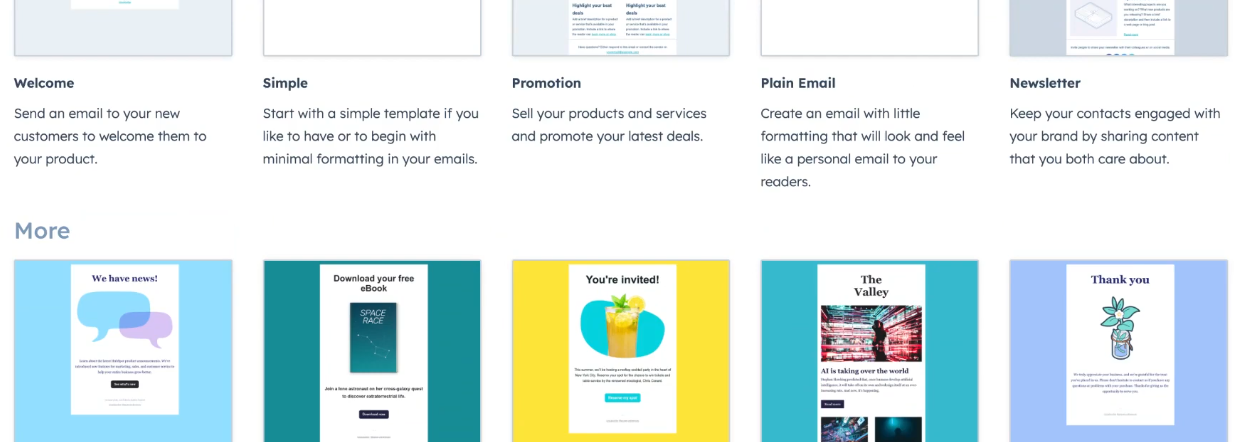
Winner: From our analysis, it becomes obvious that Klaviyo offers more opportunities and flexibility for creativity when it comes to design and templates, surpassing HubSpot in this aspect.
Score: Klaviyo 2 – HubSpot 3
Personalization and Segmentation Features
In the aspects of personalization and segmentation, Klaviyo offers its full potential as an eCommerce-focused platform. The opportunities for segmentation are numerous. Segment your audience using detailed user data related to purchases, including products they bought, browsed, or abandoned in the cart without completing the purchase.
Klaviyo offers an innovative approach that will definitely appeal to you, which is predictive analytics. Its idea is to target customers based on their behavior and expected future actions.
HubSpot is moving in a different direction and is more inclined to business-oriented segmentation. This segmentation focuses on organizing contacts by lead metrics, sales stages, and engagement levels. Since HubSpot is CRM-based, it allows you to send targeted messages depending on the stage of the sales process or the industry the contact is in. This works well for B2B marketing, where understanding the stage of the customer relationship is more important than tracking consumer patterns.
Winner: In this question, we have a tie. Of course, Klaviyo has more segments and a strong focus on customer behavior. However, HubSpot is also keeping up with the features offered, though it’s just moving in a different direction.
Score: Klaviyo 3 – HubSpot 4
A/B Testing
Both Klaviyo and HubSpot offer A/B testing, but just like in segmentation, this testing and optimization varies due to the different focus of the platforms. The testing capabilities provided by Klaviyo focus on the needs of eCommerce. You can try and experiment with:
- Product mockups
- Advertising combinations
- Email send timings
In HubSpot, testing capabilities are perfect for improving professional communication. Reporting tools will help you understand how the changes you make affect the progress of your leads through the sales pipeline. Improve your open and click-through rates by testing the following elements:
- Headlines
- Sender data
- Content layout
The list of variables for testing is not exhaustive but rather shows you the areas of testing available to you.
| Aspect | Klaviyo | HubSpot |
|---|---|---|
| Campaign Focus | Product-centric and retail-oriented campaigns | B2B messaging with a polished, professional tone |
| Personalization Capabilities | More advanced product-level customization | Stronger tools for managing client relationships |
| Optimization Goal | Aims to boost conversions and drive purchases | Focuses on improving audience interaction and engagement |
Winner: We can’t single out one platform as the best, which makes it a tie. However, as a generalization, we can emphasize that Klaviyo’s testing is focused on eCommerce sales. Meanwhile, HubSpot’s testing focuses on communication and engagement strategies for business development.
Score: Klaviyo 4 – HubSpot 5
Deliverability Rates
Email deliverability is an integral part of comparing email marketing platforms. It shows the percentage of emails that land in users’ inboxes without going to spam. So let’s take a look at Klaviуo and HubSpot deliverability based on the most recent reports.
Looking at Klaviyo’s deliverability statistics in their quarterly reports, we can see a decline. At the time of the Q1 2025 report, Klaviyo’s delivery rate was 43.66%. Compared to the report for the last quarter of 2024, the figure fell by 0.54%, and by 13.24% compared to the report for the first quarter of 2024. Although the decline seems significant, the final percentage is still quite high.
The most recent report on HubSpot’s deliverability rate is the December 2024 report. According to this report, HubSpot’s email deliverability rate is very high at 75.83%, with 17.87% of emails ending up in spam. Compared to the report for January 2024, the rate dropped by 7.92%.
Noteworthy! Although the difference is large, we should note that these indicators depend primarily on the number of emails and the quality of emails created by platforms’ clients. That is, the deliverability rating is not completely dependent on the platform.
Winner: Since we can only evaluate the overall deliverability percentage without including the number of emails sent, HubSpot is the leader in email deliverability based on the percentage comparison.
Score: Klaviyo 4 – HubSpot 6
Marketing Automation
Automation features in platforms like Klaviyo and HubSpot allow you to save time on repetitive processes and other tasks. You can automatically and instantly perform tasks like launching triggered email campaigns.
In Klaviyo, these automated email campaigns are called “flows”. We have already mentioned that Klaviyo has a lot of pre-made templates for every need. Hence, there are pre-designed templates for all common eCommerce email flows. Klaviyo’s email flow editor is easy to use and includes such important tools as conditional branching and user data updates. However, there is also one drawback, as you can only set one flow trigger.
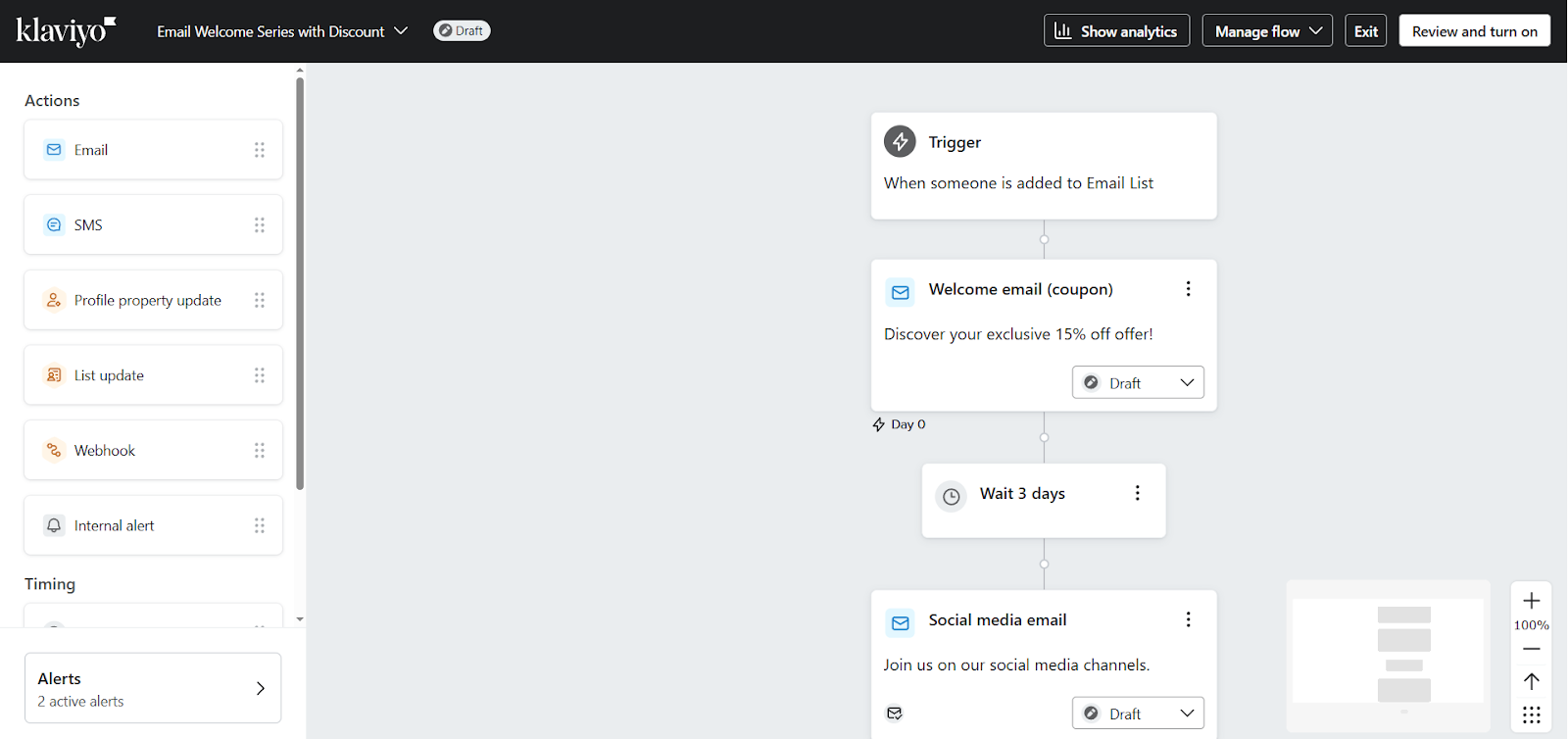
It’s also worth mentioning one of Klaviyo’s main advantages, namely the coverage and automation of SMS campaigns. This allows customers to reach a larger audience for almost nothing, as this feature is also available in the free plan.
HubSpot’s pricing policy limits the automation options for free users. You can only create simple follow-up emails that are triggered by actions such as form filling. However, a paid HubSpot subscription includes more flexible workflows. You can create email flows from scratch or customize them based on templates, as well as set up triggers, conditions, and actions in more detail using the editor.
Multichannel automation is also available in HubSpot. With the Marketing Hub Professional plan, you can automate not only email but also SMS and other campaigns.
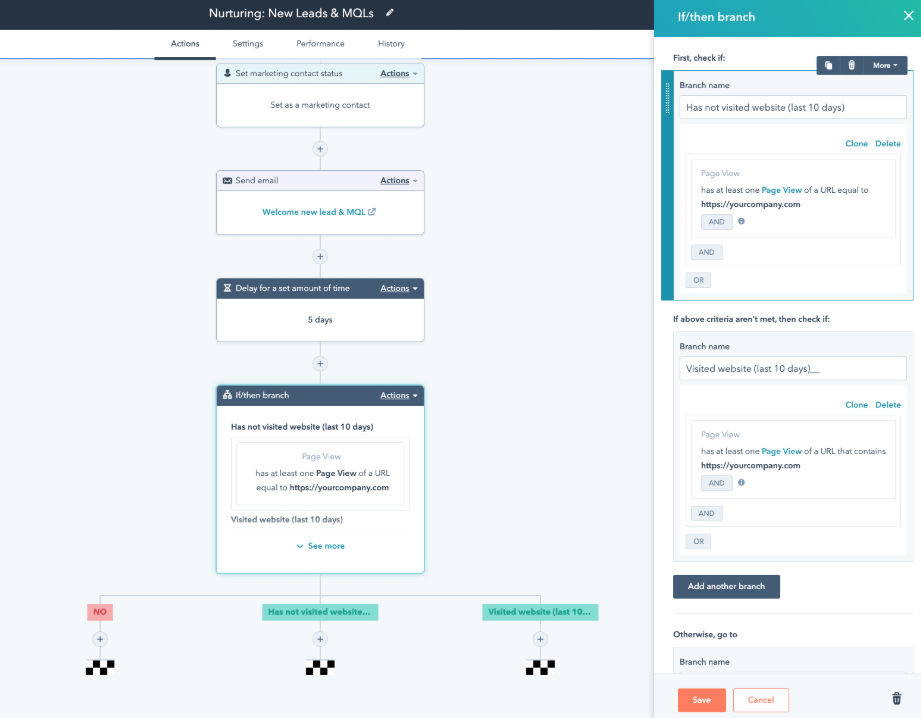
Winner: Although HubSpot, in line with Klaviyo, supports multichannel automation, the plan that includes this feature is quite expensive, while Klaviyo offers this feature starting with the free plan.
Score: Klaviyo 5 – HubSpot 6
Klaviyo vs HubSpot: Registration Forms
Klaviyo’s template library offers highly customizable and visually appealing registration form options that will help you grow your email list efficiently. Klaviyo offers multi-page forms, as well as the ability to create teaser icons, which are features that are rarely found among email marketing service providers.
Klaviyo’s email form builder is also highly functional. You can drag and drop content blocks, adapt the design to different devices, and customize forms for different audience segments. All this is created to allow you to focus on the implementation of targeted campaigns. Another unique feature is the support of A/B testing for registration forms, a feature that is usually limited only to email campaign testing in most other services.

HubSpot’s forms don’t have this level of functionality. The available templates are quite minimalistic and may require additional design skills from the user. Nevertheless, the basic customization options allow you to create convenient and usable blocks. A/B testing of forms is possible only if the form is designed as a landing page and you are using the Marketing Hub Professional plan.

Winner: When comparing Klaviyo vs. HubSpot in terms of registration forms, Klaviyo offers more advanced and flexible solutions.
Score: Klaviyo 6 – HubSpot 6
Reporting and Analytics
Klaviyo impresses with its wide range of reporting tools. You can get a variety of data from email marketing metrics such as open and click-through rates, as well as revenue generated from each campaign. Not only does the reporting come from specific individual results, but it also provides the ability to assess overall sales or growth rates. Thanks to it, you can see the performance of different customer segments and even geographic data.
Klaviyo’s reporting features also include a report on the overall deliverability of your emails to inboxes. As well as a very useful benchmarking report that allows you to compare your performance with industry averages. Klaviyo also includes customizable dashboards. You can display pre-built dashboards or create your own to highlight the data that matters most to your business.
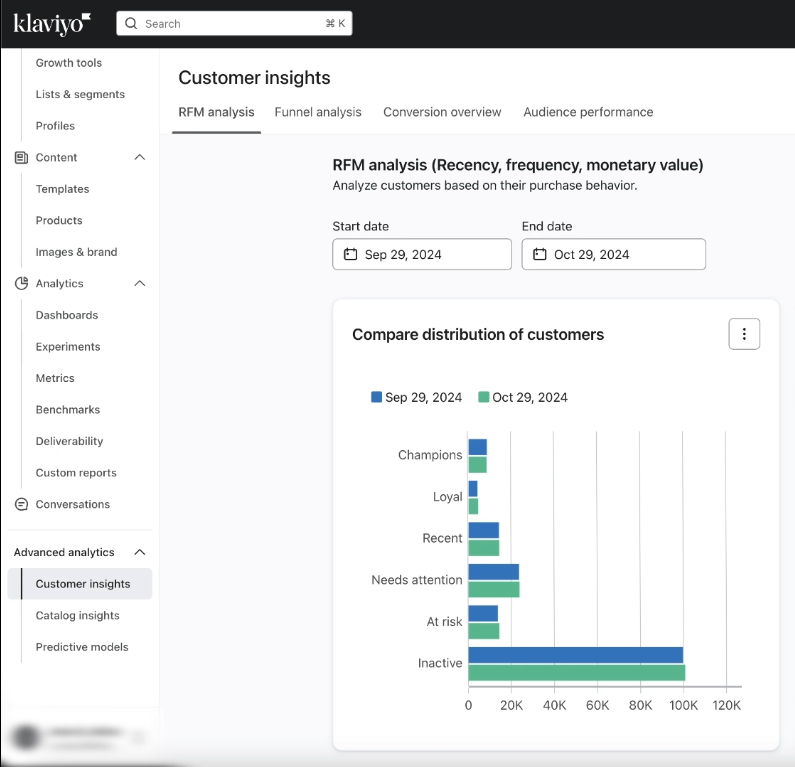
HubSpot also offers powerful reporting capabilities. You can view metrics at both the campaign and account level, and use the very same benchmarking to compare your performance to industry standards. Custom dashboards allow you to organize different types of reports, such as engagement statistics or revenue by source, depending on your focus. With a paid plan, HubSpot users have access to more custom reporting tools, additional dashboard slots, and advanced email analytics that are not available in the free version.
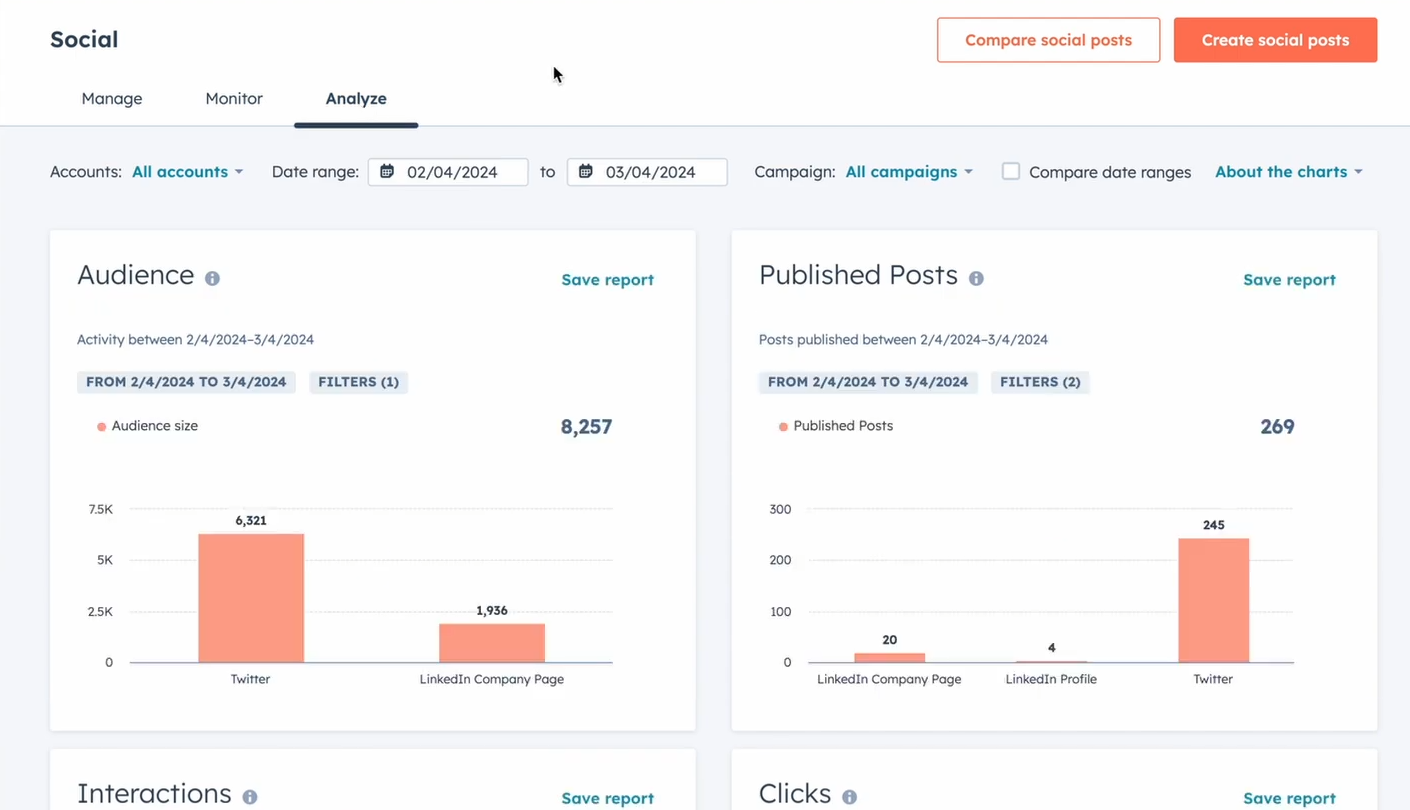
Winner: In terms of reporting and analytics, both platforms provide powerful capabilities for both kinds.
Score: Klaviyo 7 – HubSpot 7
HubSpot vs Klaviyo Integrations
One of the most important criteria for choosing an email marketing service provider is the ability to seamlessly integrate your email marketing platform with your eCommerce system. Having the necessary integrations in place is crucial for accessing customer and purchase data. Klaviyo and HubSpot offer integrations not only with leading eCommerce platforms like Shopify, WooCommerce, and BigCommerce but also with many other less popular but equally important platforms. As a result, it makes it easy to synchronize orders, customer profiles, and product information in real time.
HubSpot has an extremely broad and extensive integration ecosystem that supports more than 1,600 third-party applications. This number includes wide compatibility across a variety of categories, including CRM, sales, customer support, advertising, and more. The most notable integrations include:
- Salesforce (CRM and sales management)
- Slack (team communication)
- Google Ads and Facebook Ads (synchronization of advertising campaigns)
- Zoom (webinars and meetings)
- Eventbrite (event tracking)
- Stripe and PayPal (payment processing)
This number of integration possibilities makes HubSpot a highly attractive platform and an excellent choice for companies with complex workflows or multiple departments that require different tools.
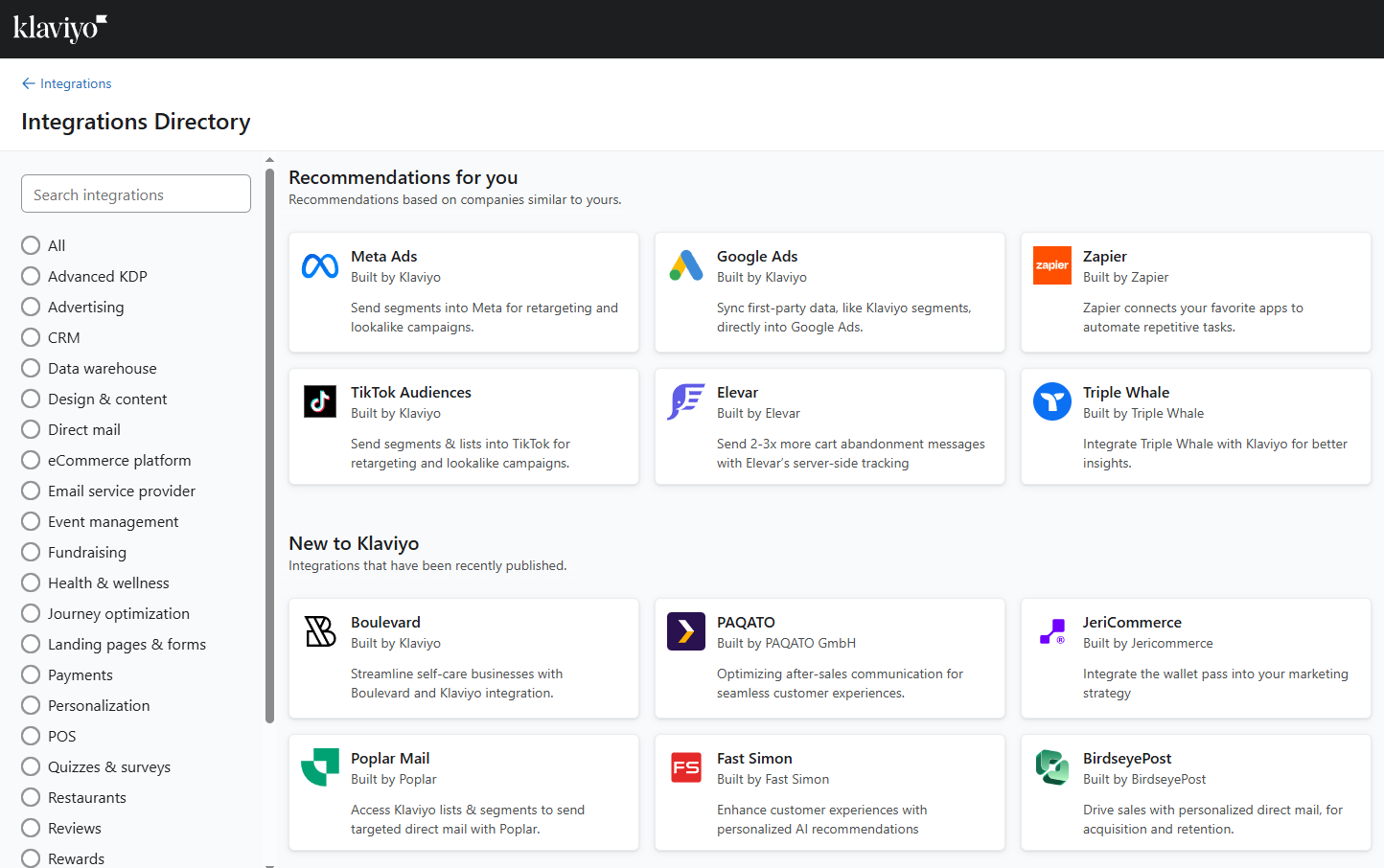
Klaviyo, concentrates on the quality of integrations rather than the quantity, offering a more focused library of integrations with more than 350 opportunities. Key integrations with Klaviyo include:
- Shopify, Magento, WooCommerce, BigCommerce, Wix, PrestaShop, and Salesforce Commerce Cloud (eCommerce platforms)
- Facebook and Instagram Ads (audience synchronization for campaigns)
- Stripe (payment and order data)
- ReCharge and Loop Subscriptions (subscription billing)
- Typeform and Jotform (form builders)
- Gorgias and Zendesk (customer support)
In addition to these core aspects, Klaviyo’s integration ecosystem covers categories such as advertising, shipping and logistics, points of sale, loyalty programs, subscriptions, quizzes, surveys, and more. This comprehensive set allows companies to effectively unify their marketing technology stack.
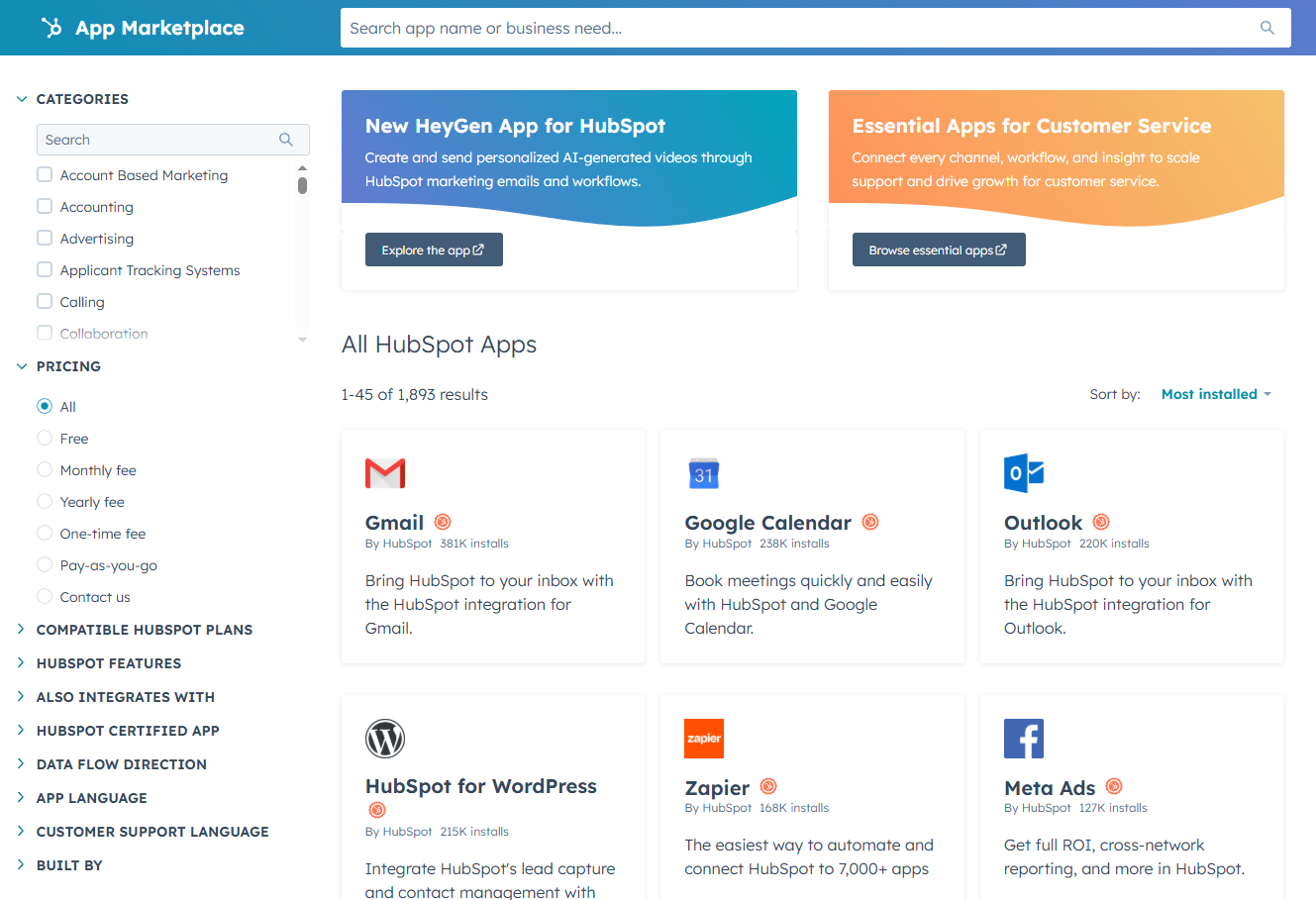
Although Klaviyo’s integration options are not that numerous, in scenarios where direct integration is not available, Klaviyo offers robust APIs and supports third-party connectors. An example of such a connector is Zapier, which allows one to create custom integrations and synchronize data across platforms. This considerable flexibility ensures that companies can tailor any of their integrations to their specific needs, even if there are no pre-built solutions available.
Winner: While Klaviyo has a significant number of integration options and has anticipated the addition of a third-party connector, HubSpot still leads in this category. HubSpot provides more integration options with various business functions, making it a more versatile option for companies looking for broad compatibility with third-party applications.
Score: Klaviyo 7 – HubSpot 8
Customer Support and Communities
Direct support for free plan customers in Klaviyo is limited, while HubSpot has no free direct support at all. However, both platforms have provided basic self-service resources such as searchable help centers and user forums.
If you are a user of the free plan at Klaviyo, you will have access to 60 days of direct support after creating an account. Once the 60 days are up, support will only be available for purchased paid plans. This personalized support is provided via email and live chat but is only available Monday through Friday. Weekend support chat and other more specialized features are available only in more premium packages.
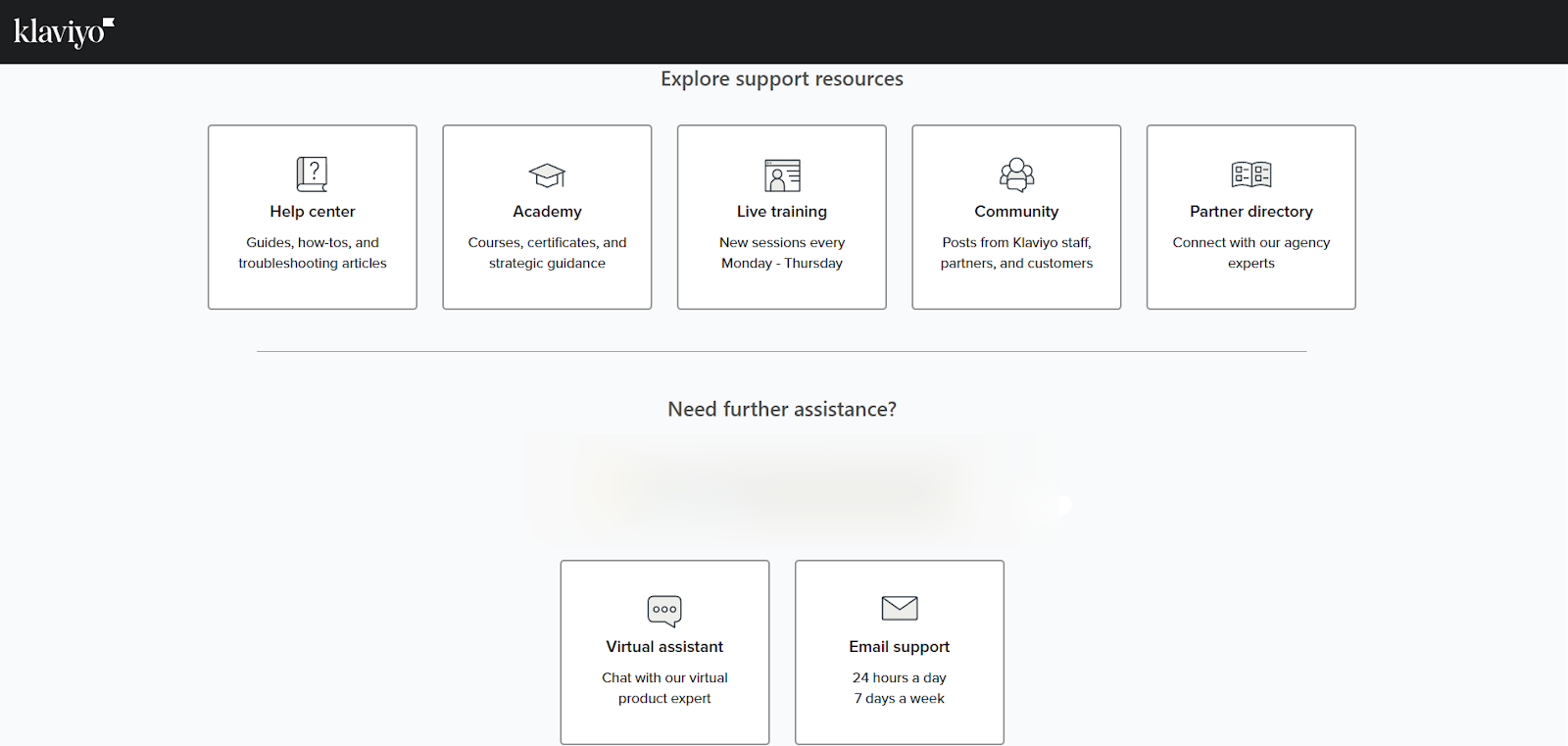
When it comes to HubSpot, the platform provides real-time support via email and live chat 24/7 only to users with a paid subscription. Call support is also offered, but only for users of Enterprise plans. HubSpot also offers onboarding services to help new customers set up and use the platform effectively. This service is expensive but is included in the price of the Marketing Hub Professional plan.
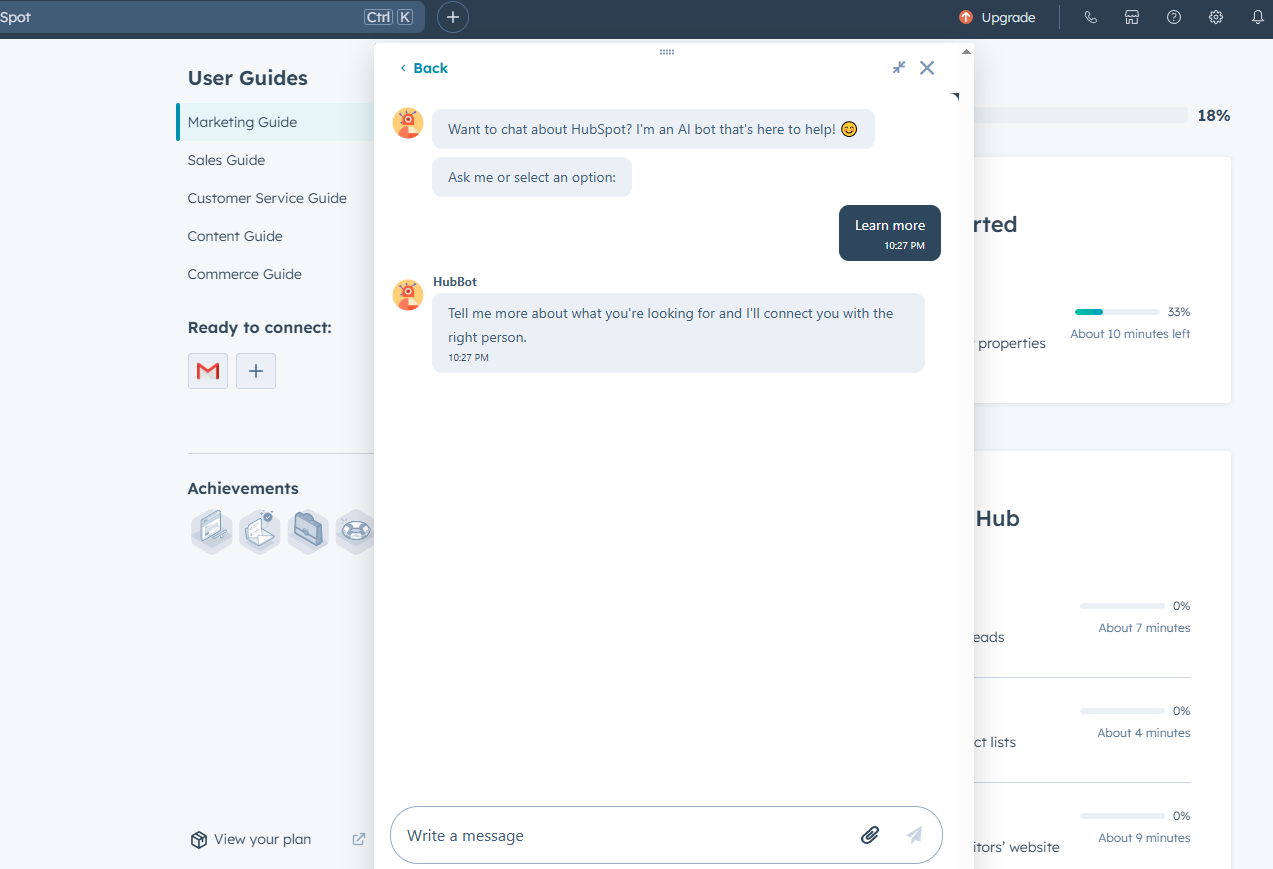
| Feature | Klaviyo | HubSpot |
|---|---|---|
| Free plan support | First 60 days only | Not available |
| Paid plan support | 24/5 email and chat support | 24/7 email and chat support. Phone support for Enterprise plan users |
| Weekend support | Via premium packages only | Available with standard paid plans |
| Onboarding services | Not required | Available for $3000, included in the Professional plan |
| Community | Includes forums for product discussions, strategy tips, use-case examples, and Q&A with Klaviyo staff and other users | More extensive forum. Includes categorized discussions (CRM, marketing, sales, CMS, etc.), user groups by region or industry, and even ideas forums where users can suggest and vote on new features |
Winner: Klaviyo and HubSpot have slightly different support services, which makes it difficult to single out an obvious leader. Klaviyo is better since it provides limited support in the free plan, while HubSpot provides support for onboarding and has a much more extensive forum. The decision is up to you, it is a tie.
Score: Klaviyo 8 – HubSpot 9
Pricing Structure
Klaviyo’s pricing policy offers a simple model that is easy to understand. The free plan includes up to 500 emails per month for up to 250 active contacts with access to almost all basic features, except for mobile push notifications. The price of a paid plan will be based on the number of contacts in your email list and the amount of emails, SMS, and MMS messages you plan to send each month. This approach makes the pricing structure quite transparent. While Klaviyo is not necessarily the cheapest option on the market, its simplicity and flexibility often make it more affordable.
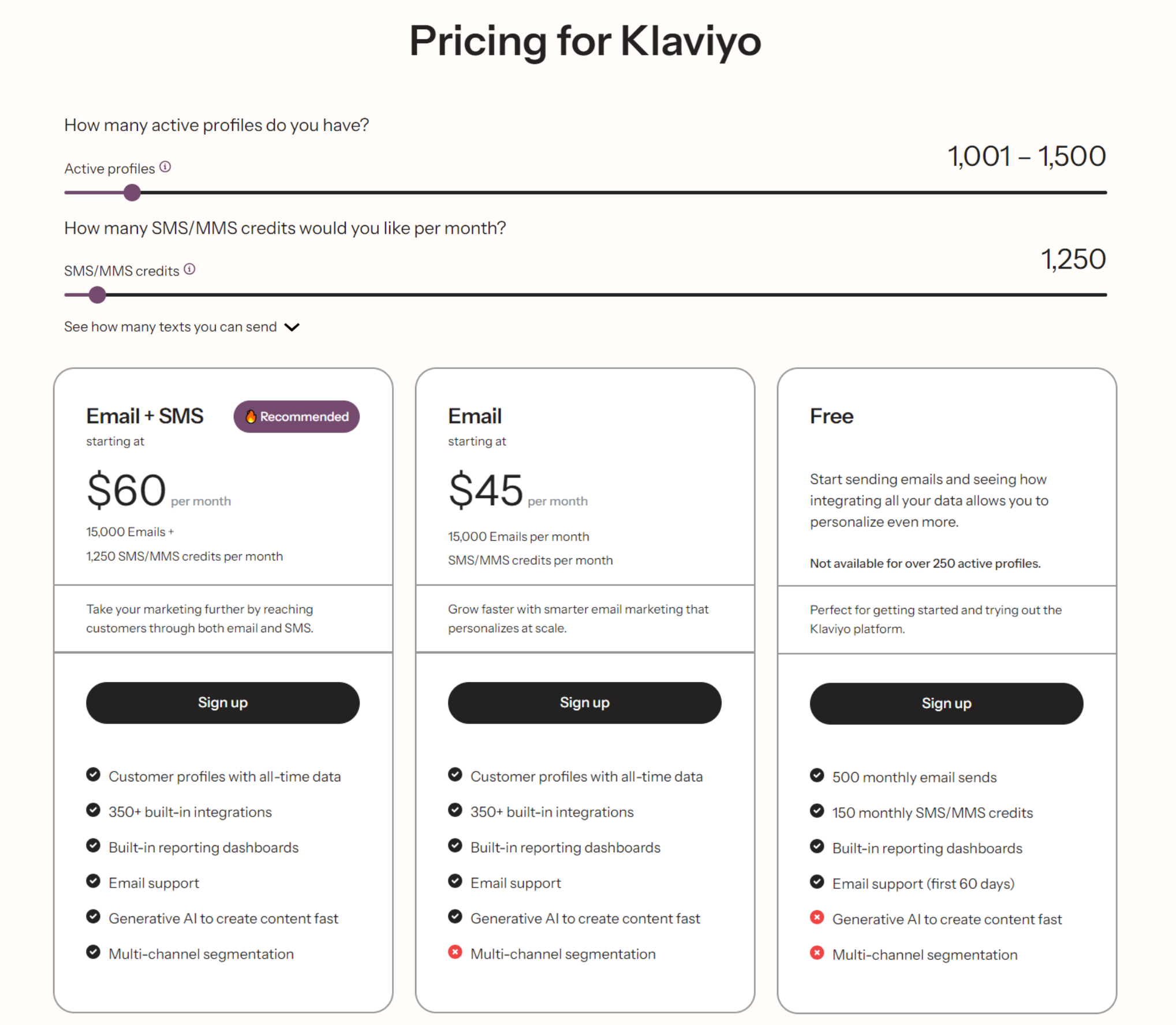
| Feature | Free | Email Plan | Email + SMS Plan |
|---|---|---|---|
| Pricing | - | $45 | $45 (depends on the amount of SMS/MMS credits) |
| Contacts | Up to 250 | Unlimited (billed by amount) | Unlimited (billed by amount) |
| Email sends | 500 | Unlimited | Unlimited |
| SMS credits | 150 | - | 1,250 (at ~1,000 contacts) |
| Automation & segmentation | Included (flows, lists) | Included | Included |
| Analytics & reporting | Basic dashboards | Full dashboards | Full dashboards |
| A/B testing | Not available | Not available | Included (multi‑channel) |
| Support | Email support (60 days) | Standard email/chat support | Standard email/chat support |
In contrast to Klaviyo, HubSpot’s pricing is more tiered and complex, making it more difficult to navigate. To get even an eCommerce store up and running, you’ll need to start with the Marketing Hub Starter plan for $20 per month. This entry-level plan only includes 10 automation actions for forms and emails, which is noticeably limiting.
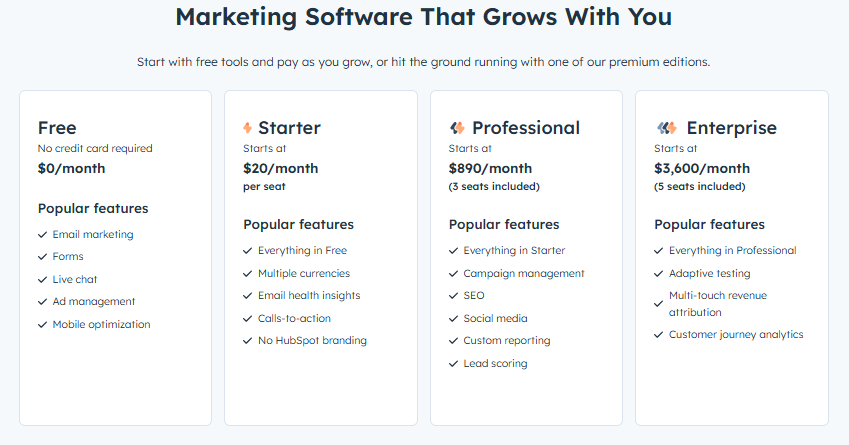
For more automation and omnichannel capabilities, you’ll need to choose a higher plan, Marketing Hub Professional, which starts at $890 per month. It should be noted that this plan also requires a one-time payment of $3,000, which makes the initial cost of entry significantly higher than Klaviyo and is quite off-putting. HubSpot also offers many different product packages and add-ons, which can make it difficult to estimate your total monthly costs.
| Feature | Free | Starter | Professional | Enterprise |
|---|---|---|---|---|
| Pricing | $0 | $20 | $890 | $3,600 |
| Marketing contacts | ~1,000 (free CRM cap) | 1,000 | 2,000 | 10,000 |
| Monthly emails | up to 2,000 | ≈5,000 est. | 20,000 | 200,000 |
| Marketing automation | Not available | Not available | Included (around 300 workflows) | Included (around 1,000 workflows) |
| List segmentation | Basic (limited lists) | 50 active/1,000 static | 1,200 active/1,200 static | 2,500 active/10,000 static |
| Analytics & reporting | Basic dashboards | Enhanced reporting | Custom dashboards | Advanced (attribution, custom) |
| A/B testing | Not available | Not available | Included | Included |
| Support | Community forums | Standard HubSpot support | Standard HubSpot support | Priority/dedicated support |
According to a statement by a Reddit user under a discussion comparing Klaviyo vs. Hubspot:
“HubSpot makes you pay more for every feature you add on, it’s more expensive at scale than Klaviyo.”
Winner: The features provided by HubSpot are more extensive and large-scale, which has led to their more complicated pricing structure. Klaviyo’s pricing policy is much clearer and more transparent, making Klaviyo the leader in terms of cost-effectiveness. In addition, the high upfront costs of the HubSpot structure are quite discouraging for small businesses.
Score: Klaviyo 9 – HubSpot 9
AI Features
HubSpot’s Breeze Copilot AI assistant is designed to simplify and accelerate marketing and sales tasks. Its dialog interface allows users to get help with the following aspects of email marketing and CRM:
- Help with writing emails
- Tone customization
- Generating new content ideas
- Creating new contacts
- Creating new deals
- Making notes
All these features are designed to reduce the time you spend on commands so you can focus on more important work. Thanks to Breeze Intelligence, HubSpot provides predictive sales forecasting for companies that manage a sales funnel. This forecasting helps to estimate future revenue and enrich contact records using external data sources. However, Breeze Intelligence artificial intelligence is designed to increase your efficiency by automating the process, not to reach a new level of marketing.
Klaviyo artificial intelligence was created with a focus on email marketing, rather than on the CRM. It is designed to increase your efficiency through better personalization and automation.
- The subject line assistant helps you create catchy subject lines for marketing emails.
- Email AI is incredibly useful because it can help you generate not plain copy and images, but ones that match your brand’s style and goals.
- Klaviyo’s AI goes further by using customer behavior data to create product recommendations, predictive analytics, and personalized content.
- Segments AI identifies target audience segments.
- Flow AI simplifies and automates the process of developing customer journeys.
Winner: Again, we cannot single out an obvious platform with the best AI between Klaviyo and HubSpot, making it a tie. This is because their AIs focus on different goals. The right choice will depend on your business models and goals. Klaviyo’s AI tools are clearly optimized for eCommerce brands, while HubSpot offers more options for companies looking to align marketing, sales, and CRM with one integrated platform.
Score: Klaviyo 10 – HubSpot 10
Industry Fit and Use Cases
The HubSpot platform was designed for companies that need a more comprehensive system that goes beyond email marketing alone. This makes it particularly useful for companies that focus on lead generation, long-term customer relationships, and inbound marketing. The originality of HubSpot is that it combines CRM, email marketing, content management, and sales tools, all in one place.
This makes HubSpot best for:
- B2B companies with long and complex sales cycles.
- Professional services firms that need CRM tools to manage customer relationships.
- Content-oriented companies that use blogs, SEO, and lead magnets to attract and convert leads.
- Sales-oriented teams that benefit from pipeline management and automation are tied to lead behavior.
Klaviyo, on the other hand, is built specifically for eCommerce. It is perfect for DTC brands that sell directly to consumers and want to deliver personalized, product-based marketing emails. Klaviyo helps eCommerce stores automatically react to customer actions in real time and apply relevant strategies. With extensive features and capabilities for segmentation and predictive analytics, Klaviyo significantly optimizes the performance of eCommerce businesses.
Klaviyo is best suited for:
- eCommerce brands.
- Online retailers are looking for advanced segmentation based on customer behavior.
- Brands focused on personalization and conversion through product recommendations.
- Stores that want to automate marketing based on customer actions through website and store.
User Reviews
We have researched the largest review platforms and gathered ratings of each tool, as well as the main pros and cons noted by users, for you to enhance your opinion with third-party observations.
Klaviyo User Reviews

Klaviyo’s strengths, according to users:
- Advanced customer segmentation
- Powerful email marketing tool
- Manageable learning curve
Klaviyo’s weaknesses, according to users:
- High costs for small businesses
- Steep learning curve
Here are some of the real positive and negative reviews from knowledgeable users about their experiences with Klaviyo:
“With Klaviyo for advertising, we can segment our customers precisely based on their purchase history, allowing us to deliver highly personalized ad messages.”
“The only bad thing I found about this tool was that as the number of subscribers increased, the cost of Klaviyo also increased considerably, which can be a problem for people or companies with no income.”
Based on reviews from Capterra and Getapp.
HubSpot User Reviews

HubSpot’s strengths, according to users:
- Advanced marketing automation
- Effective lead management
- Solid email marketing tools
- Extensive training resources
HubSpot’s weaknesses, according to users:
- Prohibitive pricing for small businesses
- Limited reporting capabilities
- Complex navigation
- Limited template customization
- Inefficient contact management
Here are some of the real positive and negative reviews from knowledgeable users about their experiences with HubSpot:
“The Marketing Hub provides a comprehensive suite of tools that streamline our marketing efforts, making it easy to track campaigns, leads, and clients in one centralized platform.”
“One of the drawbacks of HubSpot Marketing Hub is its pricing structure, which may be prohibitive for smaller businesses or startups with limited budgets. While the platform offers extensive features, access to certain advanced functionalities often requires higher-tier subscriptions, potentially pricing out smaller organizations.”
Based on reviews from Capterra and Getapp.
Klaviyo vs HubSpot: Final Thoughts
Choosing the best email marketing platform between Klaviyo and HubSpot depends heavily on your business process and goals. For DTC eCommerce brands, Klaviyo’s tools will be the perfect solution.
If your business is more service-oriented or B2B, HubSpot is a better solution. Its advanced integrated CRM and comprehensive marketing tools are ideal for companies that need to manage long sales cycles or complex customer relationships.
In the end, the right solution will depend on your needs. We, at Flowium, chose Klaviyo and have been working alongside for a long time, already becoming a master elite partner. If Klaviyo is the right fit for your business needs, we are happy to be your guide and share all our years of experience. Just contact us!
